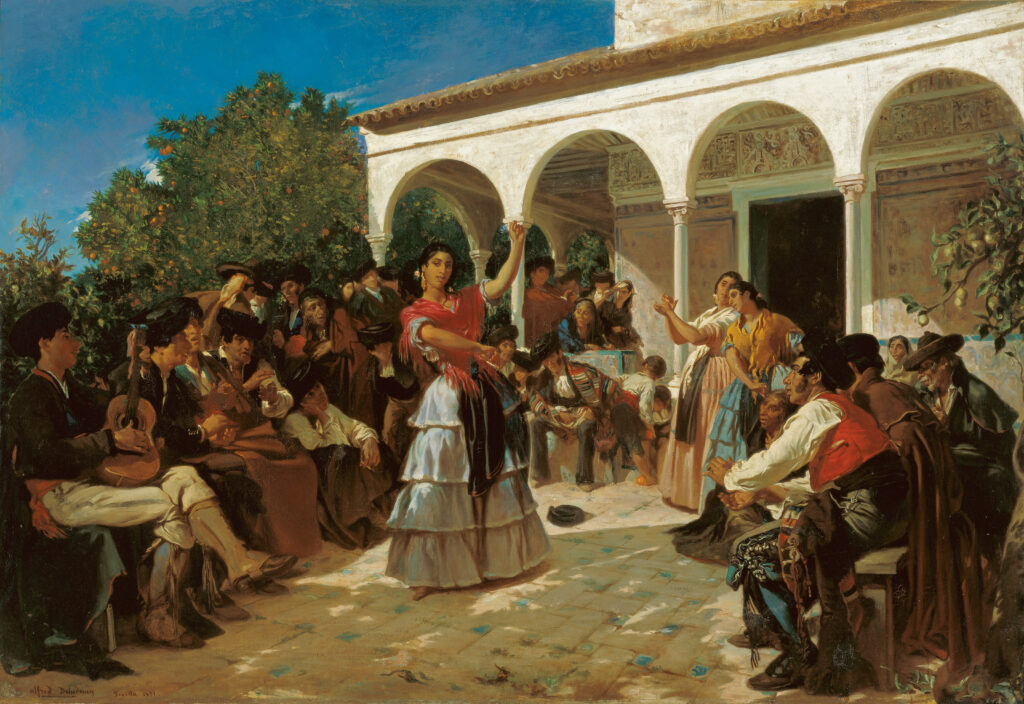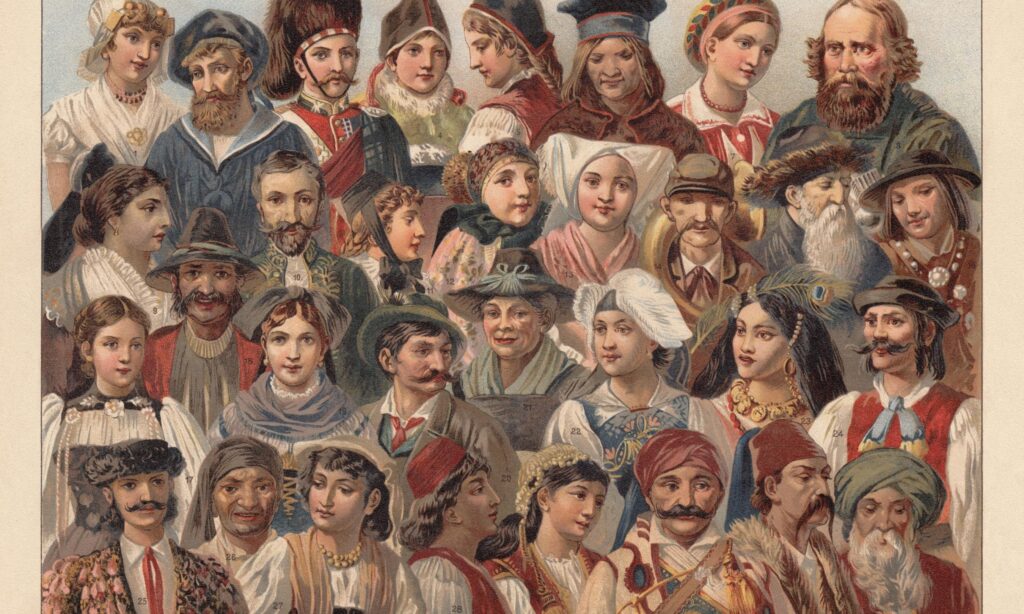Fascination and Hatred – the Roma Community
written by art historian & curator
The Roma community is one of the largest minorities living in Europe. Migrating here from the Indian continent 1.000 thousand ago, the Roma did not manage to find understanding and civic tolerance elsewhere. From the Kale community of Finland to the Domari from Palestine and Egypt, Romani people lived at the edge of society, in disadvantaged social conditions, with traditions and beliefs transmitted to generations through oral stories. Although some might find them strange and extravagant, this culture strongly emphasises honor and family values.
A unique society, easy to recognise, and challenging to radiograph, the Roma community (also known as the Gypsies) is still a major social obstacle for the Western world in its desire for community development. Most Roma have faced discrimination and persecution for centuries and today the situation has slightly improved. Even after the Roma holocaust, during WWII, in which about half a million Romani died, their social image has not improved greatly. Where does this stigma come from? Why does the Roma community not integrate with the rest of the world?
Join our free online talks:
Origins of the Roma People
The Roma ethnic group is an itinerant community by tradition that draws its roots from India. Although this issue is still debated, most scholars agree that the Roma people originated in India and migrated westward through Persia, Armenia, and the Byzantine Empire. Nowadays, they live all over the world, registering high percentages of communities on the European continent. The migration process from South Asia toward Europe can be traced as early as the 11th century when their presence was reported in Persia. By the 14th century, the Roma community settled in Eastern Europe, one century later reaching today’s territories of France, Germany, and England.ents such as animals and objects, art appeals to our physical and mental understanding.

There are also other theories about the origin of this ethnicity. One suggests that they originated in Egypt and migrated to Europe via North Africa. Another theory suggests that the Roma people originated in Europe and were once a part of the continent’s indigenous population. However, due to discrimination, they were outcasts from social hierarchies and condemned to live at the edge of society.
The Roma people’s situation during the WWII
Just as Jews, homosexuals, and other groups, during the Second World War, the Roma people were also targeted for persecution by the Nazi regime. The Roma people were put through forced labor and sterilisation, medical experiments, and imprisonment in concentration camps. Similar to the tragic fate of the Jews, in extermination camps Roma people were killed. Less than other groups, approximately 500,000 Roma people were killed during the Holocaust, in gas chambers.

However, the Roma people were discriminated against inside and outside Germany. In countries such as Romania, Romani were forced to live in ghettos and work in concentration camps. Similarly, in Croatia, they were subjected to mass killings and forced labor. In comparison to the Jews, who gained justice, and their image in the mass media grew significantly, the Roma people’s losses were largely ignored. Despite their persecution during the war, many governments did not acknowledge their suffering until many years later. Today, efforts are being made to recognise and commemorate the Roma people’s experiences during the Holocaust and to combat ongoing discrimination and prejudice against them.
The Roma Culture
The Roma culture is a rich and diverse cultural heritage that has evolved over centuries of migration and adaptation to new environments. It is characterised by a strong sense of community. Their traditional lifestyle emphasises the importance of hospitality, respect for elders, and mutual support. Extended family members are often deeply involved in each other’s lives and provide emotional and practical support in times of need.
One of the most prominent features of Roma culture is its music and dance traditions. Romani music is known for its lively rhythms and emotional expressiveness. It has significantly influenced many musical genres, including jazz, flamenco, and Eastern European folk music. Instruments such as the violin, guitar, accordion, and cimbalom are often used by the Romani in their performances.

Alfred Dehodencq via Museo Carmen Thyssen
Dance is another essential aspect of the Roma culture, with many different styles and traditions depending on the region and the community. Some of the most well-known Romani dance forms include the Kalbeliya dance of the Rajasthan region in India and the Flamenco dance of Spain. Roma dance styles are often characterised by a combination of fluid, graceful movements, and lively footwork.
Last but not least, the Roma culture stands out by its rich oral traditions. Stories, legends, and songs are passed down from generation to generation, preserving the cultural heritage of the Roma people. In this way, the elders are reinforcing the sense of identity and connection to their history and traditions.
Image of the Roma People in Mass-Media
The image of the Roma people in mass media has often been negative and stereotypical, perpetuating harmful and inaccurate beliefs about the community. The Roma people have been portrayed in the media as thieves or beggars, contributing to continuous discrimination and prejudice against the community. These stereotypes are often reinforced by sensationalist media coverage of crimes or negative events involving Roma people. At the same time, positive stories or contributions by Roma individuals are ignored.
The media has failed to accurately represent the diversity within the Roma community with its customs and traditions. Instead, the Roma people are often viewed as a homogeneous group with negative characteristics. These negative portrayals have real-world consequences, contributing to the marginalisation and exclusion of the Roma people in many parts of the world. Efforts are being made by Roma activists and allies to challenge these stereotypes and promote accurate and positive representations of the Roma community in media and popular culture.
Roma Artistic Personalities
Many influential Roma personalities have made significant contributions in various fields. The most important contributions are made in the musical field. Of the most talented guitarist of all time, Django Reinhardt, a Belgian-born Romani-French jazz artist, promoted a particular musical style named gypsy jazz. Esma Redzepova is not only the Queen of Romani Music but also a humanitarian personality who raises awareness about Roma culture through her work and music.
Ceija Stojka, an Austrian-Romani writer and artist, documented her experiences as a survivor of the Holocaust and as a member of the Roma community through her paintings and writings. Róza Balázs, a Hungarian-Romani writer and poet, was the first Roma woman to publish a book of poetry in Hungary and was an essential voice for Romani culture and rights.

Taraful Haiducilor – A Romani-Romanian musical ensemble that is renowned for its virtuosic performances of traditional Romani music, which incorporates elements of Romanian, Turkish, and Balkan music. A Serbian-Romani singer and composer, Saban Bajramovic, was known for his powerful vocals and his ability to blend traditional Romani music with modern styles.
The stigma and discrimination against Roma people have complex historical, social, and cultural roots. Roma people have been stigmatised for centuries due to their distinct culture, language, and nomadic lifestyle, which have made them outsiders in many societies. The stereotypes and negative attitudes towards Roma people are often based on myths and misconceptions, such as the belief that they are inherently criminal or dirty. These stereotypes have been perpetuated by media, popular culture, and political rhetoric, which have further reinforced the marginalisation and discrimination of Roma people.
Many organisations work to combat discrimination against Roma people around the world. The European Roma Rights Centre (ERRC) is an international organisation that works to promote and protect the human rights of the Roma people. They engage in strategic litigation, advocacy, and community empowerment to combat discrimination and promote inclusion.

The Roma Education Fund is a foundation that supports Roma children and youth in their education, from early childhood to university. They work to increase access to quality education, promote inclusive and culturally responsive learning environments, and support policies and practices that promote equity and inclusion in education. The Open Society Foundations is a global network of foundations that support civil society organizations and initiatives that promote democracy, human rights, and social justice. They have supported a range of Roma-focused initiatives, including promoting media diversity, supporting Roma-led organizations, and promoting Roma rights at the national and international levels.
Romani CRISS is a Romanian-based organisation that works to promote Roma rights through advocacy, community empowerment, and strategic litigation. They focus on a range of issues, including access to education, healthcare, housing, and employment.
GET MORE FROM LEVEL



Leave a Reply